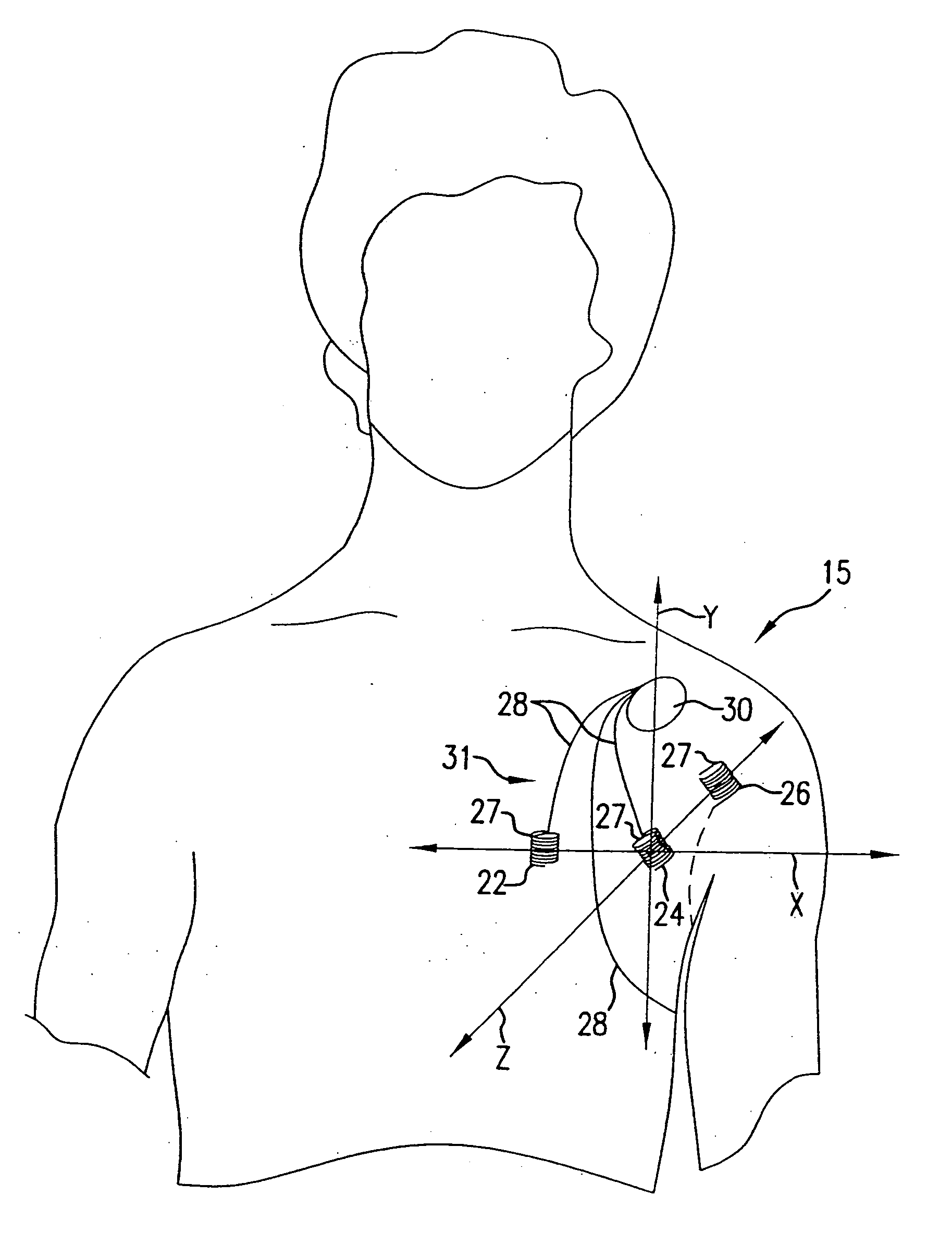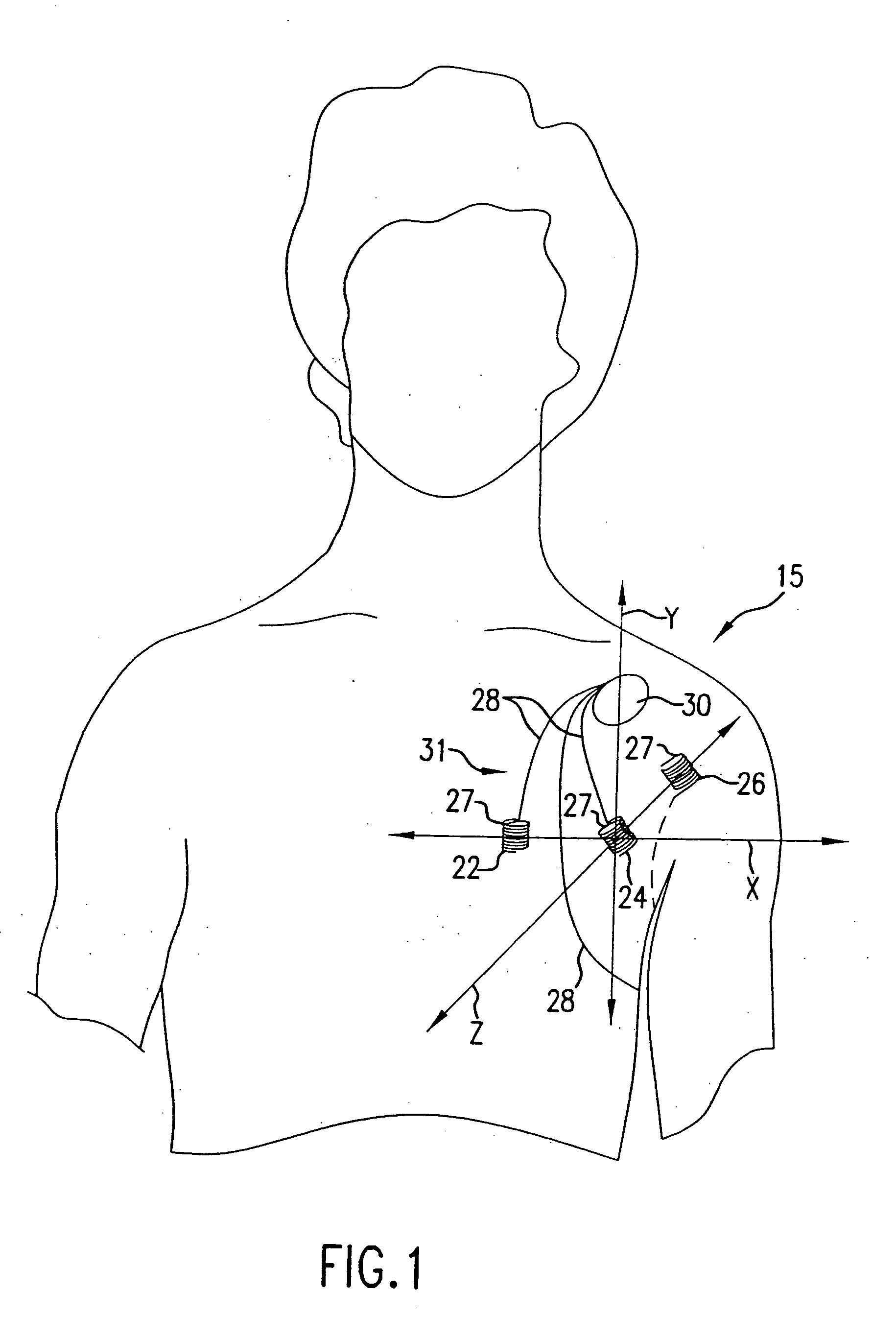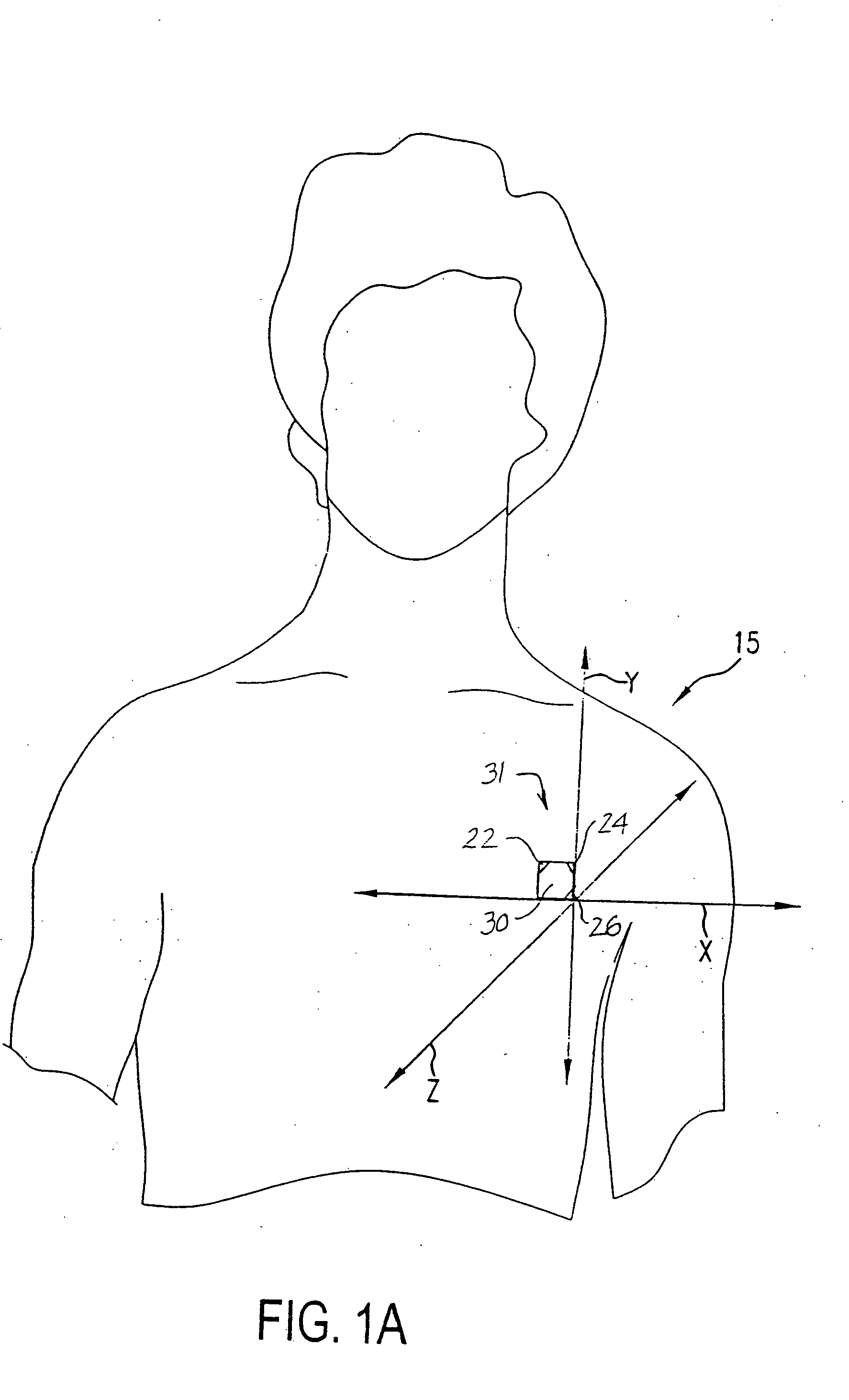Cardiac arrest monitor and alarm system
- Summary
- Abstract
- Description
- Claims
- Application Information
AI Technical Summary
Benefits of technology
Problems solved by technology
Method used
Image
Examples
Embodiment Construction
As shown in FIGS. 1-3, in one preferred embodiment of the invention, a cardiac arrest monitor and alarm system comprises an implantable or subcutaneous medical device 15. In one preferred embodiment of this invention, medical device 15 is chronically and completely implanted within a patient's body. Medical device 15 can be implanted subcutaneously to sample electrocardiographic (“ECG”) signals to continuously monitor and analyze the ECG signals to detect normal cardiac electrical activity and automatically initiate communication with an external communicating device to warn a bystander to deploy a therapy device, such as an AED when the results of the analysis call for medical intervention. Throughout this specification and the claims, the terms therapy device and AED are intended to be interchangeable with each other and are intended to include any known or future method and / or apparatus for applying therapy to a heart organ or other monitored organ.
In one preferred embodiment ...
PUM
 Login to View More
Login to View More Abstract
Description
Claims
Application Information
 Login to View More
Login to View More - R&D
- Intellectual Property
- Life Sciences
- Materials
- Tech Scout
- Unparalleled Data Quality
- Higher Quality Content
- 60% Fewer Hallucinations
Browse by: Latest US Patents, China's latest patents, Technical Efficacy Thesaurus, Application Domain, Technology Topic, Popular Technical Reports.
© 2025 PatSnap. All rights reserved.Legal|Privacy policy|Modern Slavery Act Transparency Statement|Sitemap|About US| Contact US: help@patsnap.com



